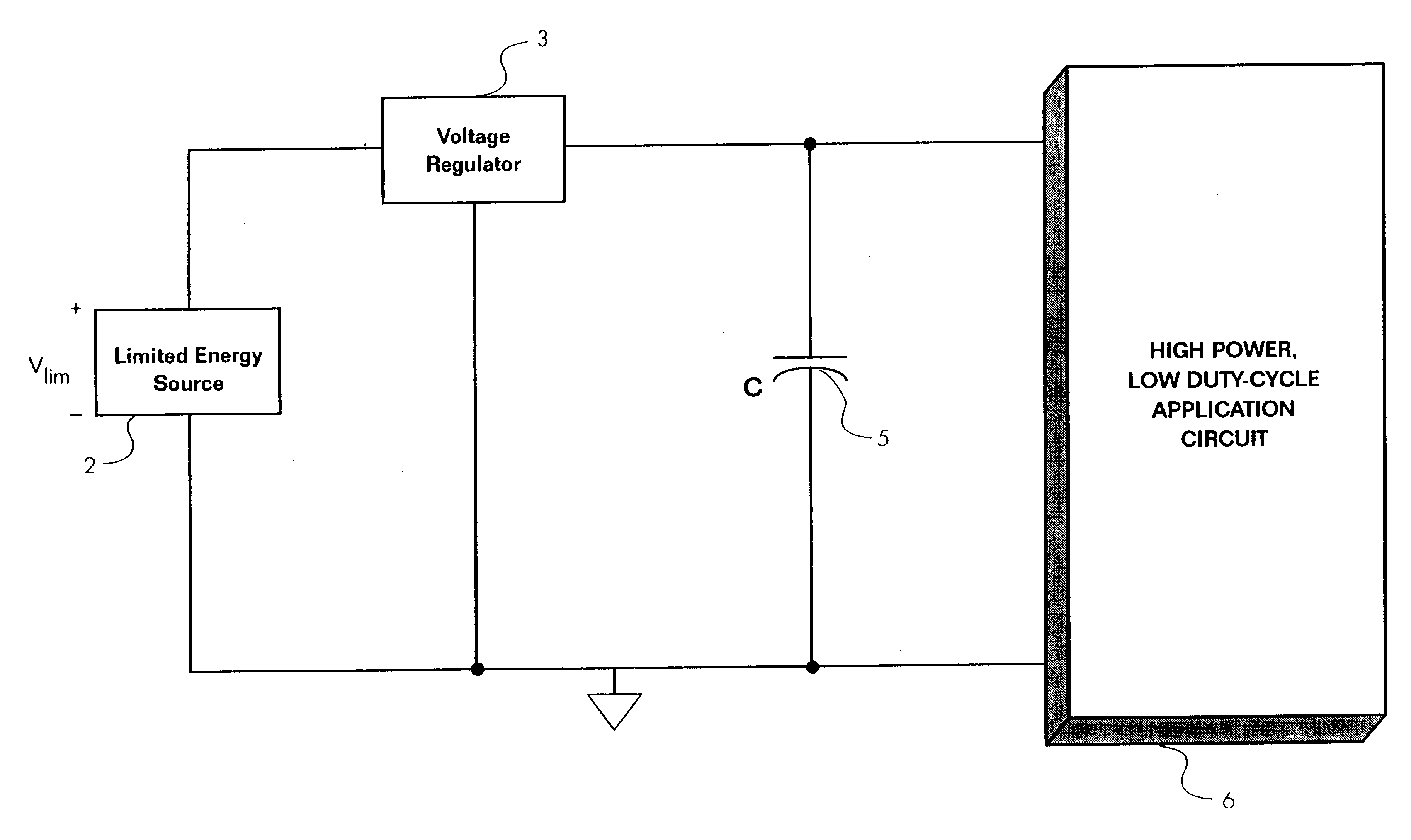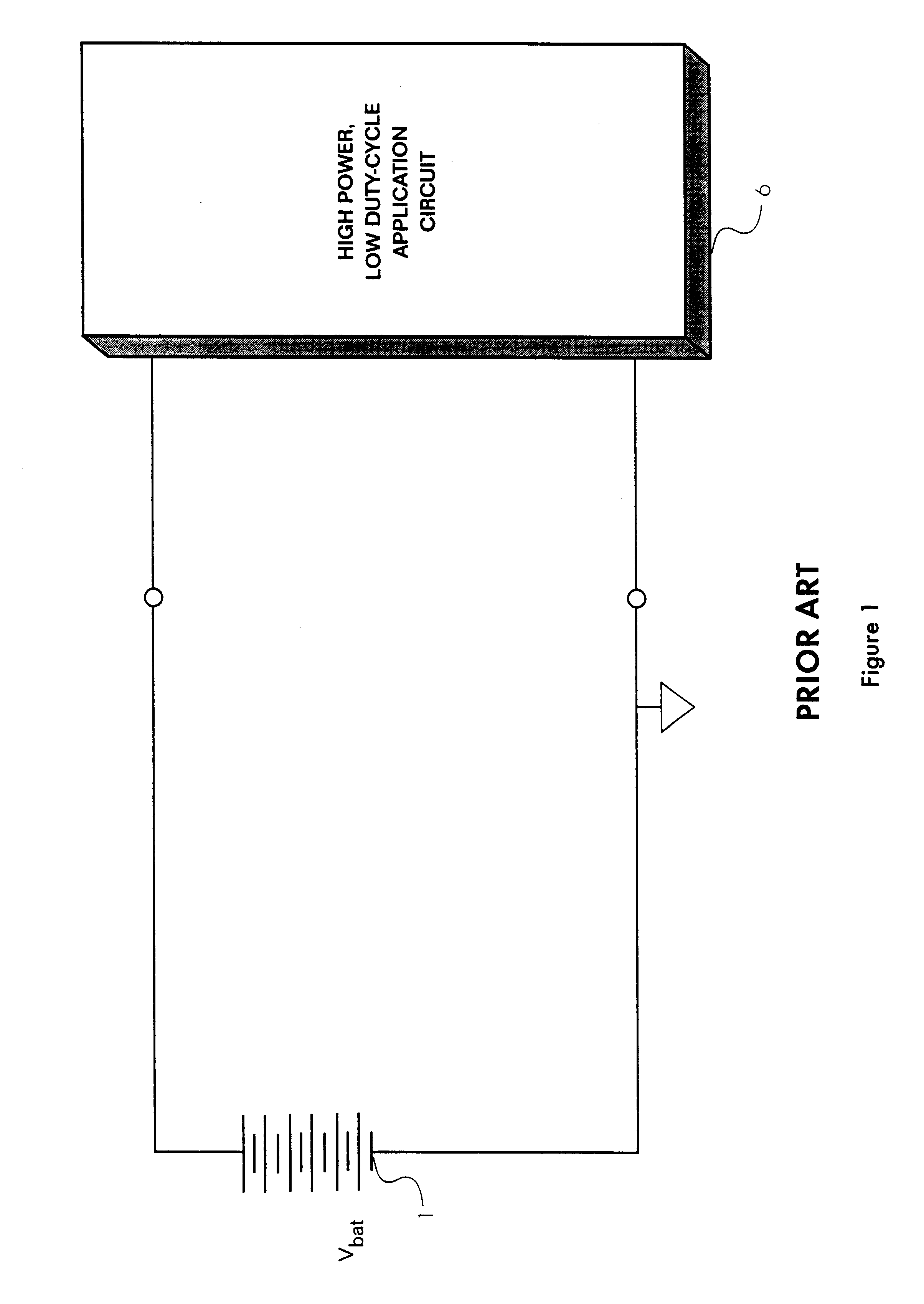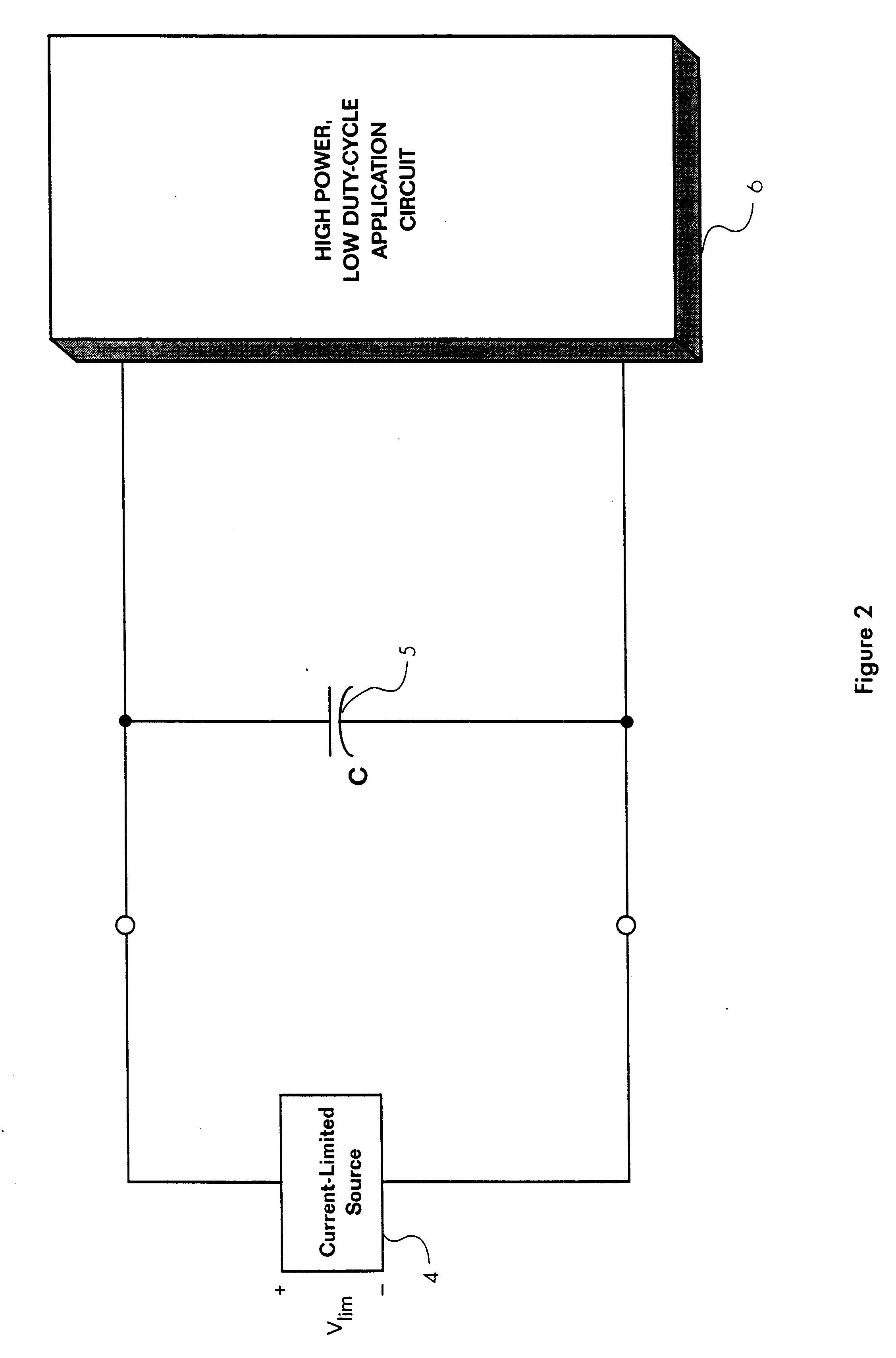Power supply system for a packet-switched radio transmitter
- Summary
- Abstract
- Description
- Claims
- Application Information
AI Technical Summary
Benefits of technology
Problems solved by technology
Method used
Image
Examples
Embodiment Construction
A high performance capacitive device useful with the present invention should possess high charge storage capacity with relatively low ESR in order to meet the input power needs of the typical transmitter power amplifier. For example, capacitive devices are now available that allow relatively large amounts of electrical energy to be temporarily stored and retrieved at much higher levels than standard batteries or conventional capacitors would allow. One class of such devices are specially constructed capacitors with very high storage capabilities referred to as super-capacitors.
A super-capacitor will generally have a rating of 1.0 farad or more of storage capacity, yet will only occupy the physical volume of a standard capacitor with only 0.002 farads of capacity. These devices are typically used to provide emergency backup power in computing applications, such as for CMOS microprocessors. The component miniaturization provided by super-capacitors is important if the power supply sy...
PUM
 Login to View More
Login to View More Abstract
Description
Claims
Application Information
 Login to View More
Login to View More - R&D
- Intellectual Property
- Life Sciences
- Materials
- Tech Scout
- Unparalleled Data Quality
- Higher Quality Content
- 60% Fewer Hallucinations
Browse by: Latest US Patents, China's latest patents, Technical Efficacy Thesaurus, Application Domain, Technology Topic, Popular Technical Reports.
© 2025 PatSnap. All rights reserved.Legal|Privacy policy|Modern Slavery Act Transparency Statement|Sitemap|About US| Contact US: help@patsnap.com



